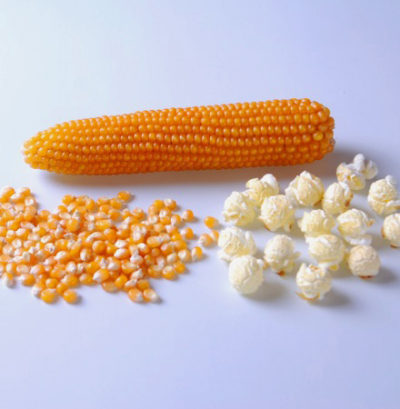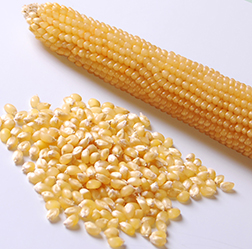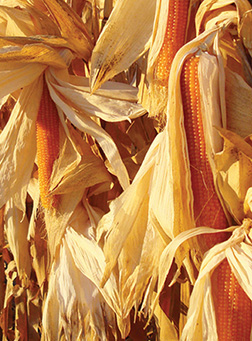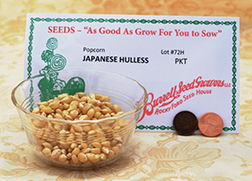Growing Popcorn.
We only sell non GMO popcorn seed.
Building a child’s enthusiasm for gardening starts with radishes, but munching on their own home grown popcorn builds great pride in their agricultural achievement. The process is much the same as growing sweet corn, with few extra steps for drying and shelling.
Heirloom popcorn seeds require warm weather, moderate moisture and rich soil. Popcorn seeds should be planted in blocks rather than long rows for pollination. In cooler climates, using cloches fashioned from old milk or clear oil jugs helps hasten the harvest, but starting corn inside is not recommended. Plant corn seeds 1″ to 2″ deep, 4″ to 6″ in 2 1/2′ to 3′ wide rows, two weeks after the last spring frost. (Planting corn seed too early risks rotting seeds.) Water well after planting and keep moist during germination. Depending on soil conditions, soil crusting can be a serious issue for sprouting after heavy rains or overhead watering. Soil crust (compaction) creates a harder layer of soil that the germinating seeds cannot push through, and even small differences in soil or rainfall can make a big difference in how well the seed germinates. When plants are 3″ to 4″ tall, thin to 8″ to 12″ apart. Corn is designed to grow fast, so periodic fertilizing is recommended. Take care not to damage the roots while weeding. In dry conditions, keep the shallow roots well watered.
Good companion crops are peas, pole beans, cucumbers, pumpkin, squash, melons and marigolds. A bad companion crop is tomatoes.
Growing Popcorn.
We only sell non GMO popcorn seed.
Building a child’s enthusiasm for gardening starts with radishes, but munching on their own home grown popcorn builds great pride in their agricultural achievement. The process is much the same as growing sweet corn, with few extra steps for drying and shelling.
Heirloom popcorn seeds require warm weather, moderate moisture and rich soil. Popcorn seeds should be planted in blocks rather than long rows for pollination. In cooler climates, using cloches fashioned from old milk or clear oil jugs helps hasten the harvest, but starting corn inside is not recommended. Plant corn seeds 1″ to 2″ deep, 4″ to 6″ in 2 1/2′ to 3′ wide rows, two weeks after the last spring frost. (Planting corn seed too early risks rotting seeds.) Water well after planting and keep moist during germination. When plants are 3″ to 4″ tall, thin to 8″ to 12″ apart. Corn is designed to grow fast, so periodic fertilizing is recommended. Take care not to damage the roots while weeding. In dry conditions, keep the shallow roots well watered.
Good companion crops are peas, pole beans, cucumbers, pumpkin, squash, melons and marigolds. A bad companion crop is tomatoes.







